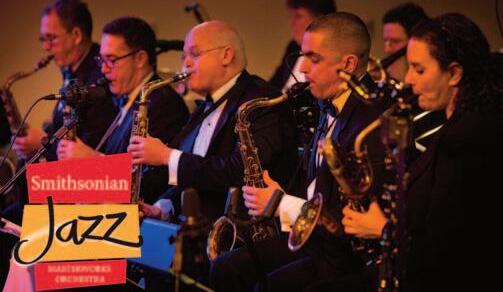
14 minute read
Smithsonian Chamber Music Society
2023–2024 Season
The 46th season of the Smithsonian Chamber Music Society features musical masterpieces from the late 16th century to the cusp of the 21st, played on some of the world’s most highly prized musical instruments. Except for the January 28 Smithsonian Chamber Orchestra performance, concerts take place in the National Museum of American History’s intimate Nicholas and Eugenia Taubman Hall of Music, with repertoire ranging from acclaimed masterpieces to undeservedly obscure gems by all-but-forgotten composers.
Veteran musicians of the Society are joined on several of the programs by emerging artists. Kenneth Slowik, SCMS artistic director and recipient of the Smithsonian Distinguished Scholar Award, again curates a series of pre-concert talks one hour prior to the Saturday concerts, shedding light on the glorious music and the lives and times of the featured composers.
The Axelrod String Quartet: Stradivarius and Amati

Smithsonian Chamber Music Society audiences are privy to the unparalleled experience of being able to hear two magnificent quartets of instruments—one made by Antonio Stradivari, the other by his teacher Nicolò Amati—in this popular three-concert series. The Axelrod String Quartet, which now includes violinist Mark Fewer, presents three programs, each of which is anchored by one of Schubert’s last quartets.
Works of quartet masters Haydn, Beethoven, and Shostakovich are joined by three 20th-century works related, in their diversity, to varied interests of the National Museum of American History. Much of the music of African American composer Florence Price was rediscovered only in 2009. Her String Quartet in G Major, a work from 1929, recalls the harmonic language of Antonín Dvořák, who observed, “In the Negro melodies of America I discover all that is needed for a great and noble school of music.”
The music of the Argentinian Osvaldo Golijov, resident in the United States since 1986, has been characterized as “forcing us to look and listen in a way that we’re not asked to do inside other music, speaking to the divisiveness and coming together of cultures.” The Austrian American Erich Wolfgang Korngold is probably most widely known for the nearly two dozen Hollywood film scores he wrote in the 1930s, ’40s, and ’50s (among them The Adventures of Robin Hood, for which he won the Academy Award in 1934), but many of his operas, orchestral and chamber works, songs, and piano pieces employ the same appealingly kaleidoscopic harmonic palette.
The Axelrod String Quartet
Mark Fewer, violin; Marc Destrubé, violin; James Dunham, viola; Kenneth Slowik, violoncello
Sat., Dec. 9, 7:30 p.m. and Sun., Dec. 10, 6:30 p.m.
Florence Price: String Quartet in G Major
Ludwig van Beethoven: Quartet in E-flat Major, Op. 74, the Harp
Franz Schubert: Quartet in A Minor, D804, Rosamunde
Sat., Apr. 6, 7:30 p.m. and Sun., Apr. 7, 6:30 p.m.
Joseph Haydn: Quartet in F Minor, Op. 20, No. 5
Erich Wolfgang Korngold: Quartet No. 2 in E-Flat Major, Op. 26
Franz Schubert: Quartet in D Minor, D810, Death and the Maiden
Sat., Apr. 27, 7:30 p.m. and Sun., Apr. 28, 6:30 p.m.
Osvoldo Golijov: Tenebrae for String Quartet
Dmitri Shostakovich: Quartet No. 7
Franz Schubert: Quartet in G Major, D887
Note: Saturday concerts at 7:30 p.m. include a pre-concert lecture at 6:30 pm. Sunday concerts at 6:30 p.m. do not include a lecture.
3-concert series: CODE BPS6 (Saturdays at 7:30 p.m.); CODE BPS7 (Sundays at 6:30 p.m.); Members $80; Nonmembers $100
Individual concerts: Sat., Dec. 9 (CODE 1P0-814); Sun., Dec. 10 (CODE 1P0-817); Sat., Apr. 6 (CODE 1P0-815); Sun., Apr. 7 (CODE 1P0-818); Sat., Apr. 27 (CODE 1P0816); Sun., Apr. 28 (CODE 1P0-819); Members $30; Nonmembers $35
All Axelrod concerts take place at the Nicholas and Eugenia Taubman Hall of Music, National Museum of American History, 14th St. and Constitution Ave., NW (Metro: Federal Triangle) Please
In Person
Masterworks of Five Centuries
The season presents three chamber program dyads, plus a chamber orchestra concert. The Smithsonian Consort of Viols makes two appearances. In the first, fugues of Bach from The Art of Fugue are combined with Bach fugue arrangements by Mozart. The spring program features English consort music by Orlando Gibbons and Henry Purcell, whose 1680 fantasias provide a fitting capstone to a venerable tradition. Catherine Manson and Rebecca Landell Reed join the SCMS artistic director in two programs surveying Beethoven piano trios, and in another pairing, Slowik is partnered by violinist Edwin Huizinga, viol player Arnie Tanimoto, and harpsichordist Corey Jamason for sonatas, suites, and trios of J. S. Bach and Jean-Philippe Rameau. The January chamber orchestra concert honors the 150th anniversary of Arnold Schönberg’s birth.
Sat., Oct. 14, 7:30 p.m. and Sun., Oct. 15, 6:30 p.m.
Fugues of Bach and Mozart
The Smithsonian Consort of Viols
Kenneth Slowik, Arnie Tanimoto, Catherine Slowik, and Chelsea Bernstein, viols
Sat., Nov. 4, 7:30 p.m. and Sun., Nov. 5, 6:30 p.m.
Sonatas and Trios of Bach and Rameau
Edwin Huizinga, violin; Arnie Tanimoto, viola da gamba; Kenneth Slowik, harpsichord
Sat., Nov. 18, 7:30 p.m. and Sun., Nov. 19, 6:30 p.m.
Piano Trios of Beethoven
Op. 1, No. 2 in G Major; Fourteen Variations, Op. 44; Op. 11 in B-flat Major
The Smithsonian Chamber Players
Catherine Manson, violin; Rebecca Landell
Reed, cello; Kenneth Slowik, fortepiano
2024
Sun., Jan. 28, 7:30 p.m.
Béla Bartók: Romanian Folk Dances, Sz.56
Florence Price: Andante moderato
Ludwig van Beethoven, arr. Gustav Mahler: Quartetto serioso, Op. 95
Arnold Schönberg: Verklärte Nacht, Op. 4
The Smithsonian Chamber Orchestra
Kenneth Slowik, conductor
Sat., Feb. 10, 7:30 p.m. and Sun., Feb. 11, 6:30 p.m.
Piano Trios of Beethoven
Op. 1, No. 1 in E-flat Major; Op. 1, No. 3 in C Minor; Op. 70, No. 1 in D Major, the Ghost
The Smithsonian Chamber Players
Catherine Manson, violin; Rebecca Landell
Reed, cello; Kenneth Slowik, fortepiano
Sat., Feb. 24, 7:30 p.m. and Sun., Feb. 25, 6:30 p.m.
Suites and Sonatas of J. S. Bach
The Smithsonian Chamber Players
Corey Jamason, harpsichord; Kenneth Slowik, cello and viola da gamba
Sat., Mar. 16, 7:30 p.m. and Sun., Mar. 17, 6:30 p.m.
Consorts of Orlando Gibbons and Henry Purcell
The Smithsonian Consort of Viols
Kenneth Slowik, Arnie Tanimoto, Wade Davis, Catherine Slowik, Chelsea Bernstein, and Lily Schrantz, viols
Note: Both series options include the Sunday, January 28 Smithsonian Chamber Orchestra concert
7-concert series: CODE BPS8 (Saturday concerts at 7:30 p.m., with pre-concert talks at 6:30 p.m. The Sunday, January 28 concert at 7:30 p.m. does not include a pre-concert talk.); CODE BPS9 (Sunday concerts at 6:30 p.m., except January 28 concert at 7:30 p.m. Pre-concert talks are not included in the Sunday series.); Members $200; Nonmembers $240
Individual concerts: Sat., Oct. 14 (CODE 1P0-820); Sun., Oct. 15 (CODE 1P0-827); Sat., Nov. 4 (CODE 1P0-821); Sun., Nov. 5 (CODE 1P0-828); Sat., Nov. 18 (CODE 1P0-822); Sun., Nov. 19 (CODE 1P0-829); Sun., Jan. 28 (CODE 1P0-823); Sat., Feb. 10 (CODE 1P0-824); Sun., Feb. 11 (CODE 1P0-830); Sat., Feb. 24 (CODE 1P0-825); Sun., Feb. 25 (CODE 1P0-831); Sat., Mar. 16 (CODE 1P0-826); Sun., Mar. 17 (CODE 1P0-832); Members $30; Nonmembers $35
All Masterworks concerts take place in the Nicholas and Eugenia Taubman Hall of Music, National Museum of American History, Constitution Ave. at 14th St. NW (Metro: Federal Triangle) except for the January 28 performance at St. Mark’s Capitol Hill, 301 A St. SE (Metro: Capitol South)

Smithsonian Jazz Masterworks Orchestra 2023–2024 Concert Series

Under the artistic direction of maestro Charlie Young, the Smithsonian Jazz Masterworks Orchestra has celebrated some of the greatest jazz music throughout its 33-year history as one of the crown jewels of the Smithsonian’s National Museum of American History. The 2023–2024 SJMO season adds new excitement and luster to that musical tradition.
Fri., Apr. 5 | Aspects of Ellington
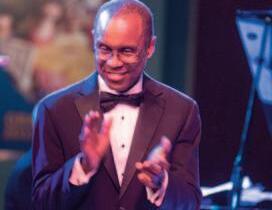
Duke Ellington composed dynamic music that inspired vivid visual imagery and emotion. Combining his unconventional orchestration technique with the unique talent of his individual orchestra members, Ellington was able to transpose everyday life into musical works of art. To mark what would have been his 125th year, the SJMO launches Jazz Appreciation Month by highlighting elements of the Duke’s music and his orchestra with signature works such as “East St. Louis Toodle-oo,” “The Degas Suite,” and “Jack the Bear.” (Full Orchestra)
Sat., June 1 | Sarah Vaughan: The Divine One
Sat., Oct. 7 |
Thad
Jones: A Centennial Celebration
Developing his orchestration aesthetic during his Basie years, for over three decades Thad Jones contributed greatly to the tonal and textural evolution of modern big band composing and arranging. The SJMO kicks off its season by honoring the great Thaddeus Joseph Jones with a centennial tribute including “H.R.H. (Her Royal Highness),” “A Child Is Born,” and “Tip Toe.” (Full Orchestra)
Sun., Dec. 3 | Jazz and the U.S. Armed Services
Official military bands date back to 1798 with the establishment of the U.S. Marine Band. In the 1910s, First Lieutenant James Reese Europe infused elements of jazz into military music, and today all branches have an official jazz ensemble. The SJMO salutes the U.S. military jazz bands and the role they play inspiring soldiers, fostering patriotic support, and promoting national interests at home and abroad. Selections include “Memphis Blues,” “American Patrol,” and “Armed Forces Medley.” (Full Orchestra)
Sat., Feb.
10 | The Legacy of Max Roach
Inspired by Chick Web, Sonny Greer, Jo Jones, and the innovations of Kenny Clarke, during the 1940s Max Roach revolutionized the world of modern drum-set playing. He developed a swing and cymbal technique with dynamic expression that became the template for the creative imagination and technical mastery required to move modern jazz forward. With songs such as “Four-X,” “Cou-Manchi-Cou,” and “Liberté,” the SJMO honors the legacy of Max Roach, who would have turned 100 on January 20. (Smaller Ensemble)
Sarah Vaughan’s colorful vocal tone, unparalleled range, elastic stylized phrasing, and all-around dynamic musical interpretation earned her the moniker “The Divine One.” Also known as “Sassy,” Vaughan became one of the greatest jazz vocalists in the history of the music. To close out the concert season, the SJMO features singer Sharón Clark in celebration of the centennial year of NEA Jazz Master Sarah Vaughan. Songs like “After You’ve Gone,” “It Don’t Mean a Thing (If It Ain’t Got That Swing)” and “The Lady’s in Love with You” rekindle the Vaughan spell. (Full Orchestra)
5-concert series: CODE BPS1; Members $85; Nonmembers $105 Individual concerts: Sat., Oct. 7 (CODE 1P0-833); Sun., Dec. 3 (CODE 1P0-834); Sat., Feb. 10 (CODE 1P0-835); Fri., Apr. 5 (CODE 1P0-836); Sat., June 1 (CODE 1P0-837); Members $25; Nonmembers $30
Please note: Concerts take place at 7 p.m. at Baird Auditorium in the National Museum of Natural History, except for the February 10 program, held at the Warner Bros. Theater at the National Museum of American History. Each concert’s musical program is subject to change.
Broadway’s Backstory
The Evolution of an Entertainment Powerhouse
Today Broadway is a globally recognized brand representing roughly 40 legitimate playhouses located in and around Times Square. But years ago, it was a sprawling entertainment mecca encompassing a considerable range of stage forms. Minstrelsy, vaudeville, nightclubs, and burlesque were all an integral part of Broadway in the early 1900s. Ragtime and jazz were developed and refined here. And it was primarily on Broadway that the American musical was born.
The so-called Main Stem has a rich and complex history. It reaches back to the 1700s and continues to reflect the social, cultural, and political sensibilities of the country. Musical theater artist and historian Ben West chronicles the development of the Broadway stage and highlights several pivotal artists and shows along the way— particularly musicals. Join him for an exciting and informative look at the dazzling history of the original incubator of American entertainment.
Mon., Oct. 16, 7 p.m.; CODE 1CV-023; Members $20; Nonmembers $25
Special Offer: Receive a complimentary ticket to this program by registering for the Dec. 13 Radio City Music Hall bus tour by Oct. 13 (see page 71).
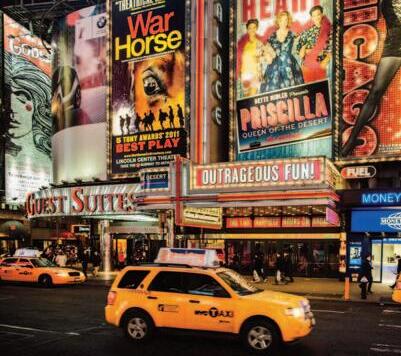
Stephen Sondheim: Wizard of Broadway
For over five decades he spun his words and music to be sung on the stages of Broadway theaters. Stephen Sondheim transformed musical theater into psychodrama, exploring characters and emotions in such a novel and robust way so that no one ever leaves the theater quietly after a Sondheim musical.

American music specialist Robert Wyatt leads a path through Sondheim’s life and creations, from the trailblazing contributions of West Side Story, Follies, and Company to the animated precision of shows like A Little Night Music and Sweeney Todd to the boldness of later works such as Assassins and Passion. The program is brought to life with musical recordings, videos of performances, cast albums, and clips of Sondheim speaking. Experience the wizardry of Stephen Sondheim as Wyatt pairs the virtuosity of his words with the passion of his music—which sends you exiting the theater with “Send in the Clowns” ringing in your ears.
Tues., Oct. 24, 6:30 p.m.; CODE 1M2-284; Members $30; Nonmembers $35
The Beethoven Symphonies
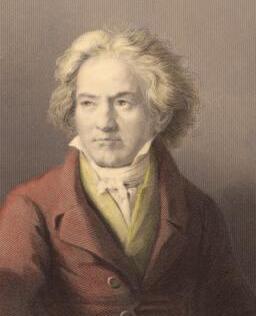
A new century literally began as Ludwig van Beethoven completed his first symphony in the year 1800. Within the next quarter century, his great cycle of nine symphonies was complete, taking its place as the measure for the entire symphonic repertoire that followed it. In a 5-part series, classical music and opera expert Saul Lilienstein uses the finest audio and video recording as he discusses each symphony, as well as examines Beethoven’s personal journey of creation against the backdrop of Viennese society.
OCT 17 Symphonies No. 1 and No. 2
OCT 24 Symphonies No. 3 (“Eroica”) and No. 4
OCT 31 Symphonies No. 5 and No. 6
NOV 7 Symphonies No. 7 and No. 8
NOV 14 Symphony No. 9
5 sessions: Tues., Oct. 17–Nov. 14, 12 p.m.; CODE 1M2-283; Members $85; Nonmembers $95
High School Classics Revisited
In this series, Joseph Luzzi, a professor of literature at Bard College, revisits and provides new perspectives on novels that typically appear on high school reading lists.
The Great Gatsby
Many people consider F. Scott Fitzgerald’s masterpiece, The Great Gatsby, a candidate for the Great American Novel. Why do its themes—especially Jay Gatsby’s quest for the American Dream through his vast wealth and lifelong love for Daisy—resonate so powerfully with readers? Luzzi revisits Fitzgerald’s iconic work to see how, almost 100 years after its publication in 1925, the work continues to cast a powerful spell with its piercing psychological insights and gorgeously lyrical language.
Thurs., Oct. 12, 6:30 p.m.; CODE 1J0-295; Members $30; Nonmembers $35
Of Mice and Men
John Steinbeck’s literary portraits of American life remain as captivating today as when they were written decades ago. Luzzi explores the themes, ideas, and style of Steinbeck’s brief 1937 masterpiece Of Mice and Men. This haunting tale of friendship and economic struggle continues to enchant readers today. Luzzi explores how Steinbeck’s depictions of those on the margins of American society present a powerful record of human psychology and the broader economic forces that can shape—and in some cases unmake—a life.
Thurs., Oct. 26, 6:30 p.m.; CODE 1J0-297; Members $30; Nonmembers $35
Great Expectations
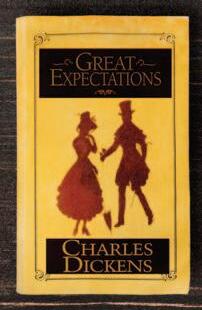
Charles Dickens’ Great Expectations is renowned for its brilliant narrative, memorable characters, and illuminating depictions of the complexities of English class and society during the Victorian era. Luzzi explores the literary techniques and devices that give the beloved classic, published in 1861, its enduring fame. He highlights Dickens’ remarkable psychological insight as he explores the motives and actions of characters such as the protagonist Pip, Estella, Magwitch, Miss Havisham, and Joe Gargery—a fascinating cast that makes the novel one of Dickens’ finest.
Thurs., Nov. 16, 6:30 p.m.; CODE 1J0-310; Members $30; Nonmembers $35
Advantages to providing your email to customer service:
• Receive a digital version of the member program guide so you can read it anywhere
• Receive important notices regarding your ticket purchases along with other useful information
1984
To read George Orwell’s 1984, published in 1949, is to be astonished by his foreseeing some of the most pressing concerns of today’s world, including the role of misinformation, the proliferation of media, and the dramatic struggle between freedom of speech and authoritarian control. Luzzi explores how and why Orwell created a work of such transcendent brilliance, especially in its ability to diagnose deep-rooted political problems and their effect on human individuality. Luzzi also examines why Orwell is considered one of literature’s greatest prose stylists.
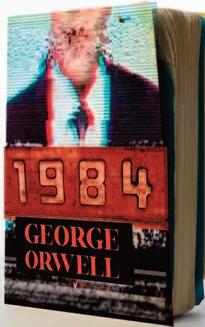
Thurs., Nov. 30, 6:30 p.m.; CODE 1J0-311; Members $30; Nonmembers $35
Romeo and Juliet
Few works of Shakespeare are as instantly recognizable as Romeo and Juliet, a play that has enthralled readers and theatergoers ever since it was written in 1597. Luzzi takes a fresh look at this moving work, which ranks as one of the greatest love stories of all time. Luzzi pays particular attention to Shakespeare’s original use of language, especially his ability to capture the inner lives of his characters with observations on human nature that have contributed to his status as arguably the greatest writer in the history of English literature.

Thurs., Dec. 14, 6:30 p.m.; CODE 1J0-312; Members $30; Nonmembers $35

